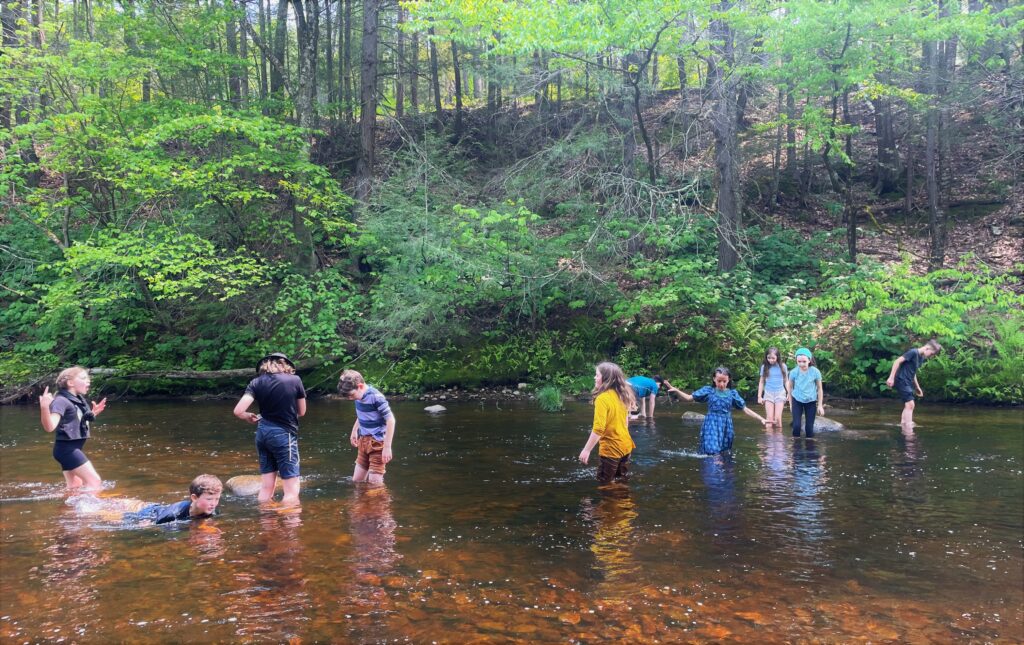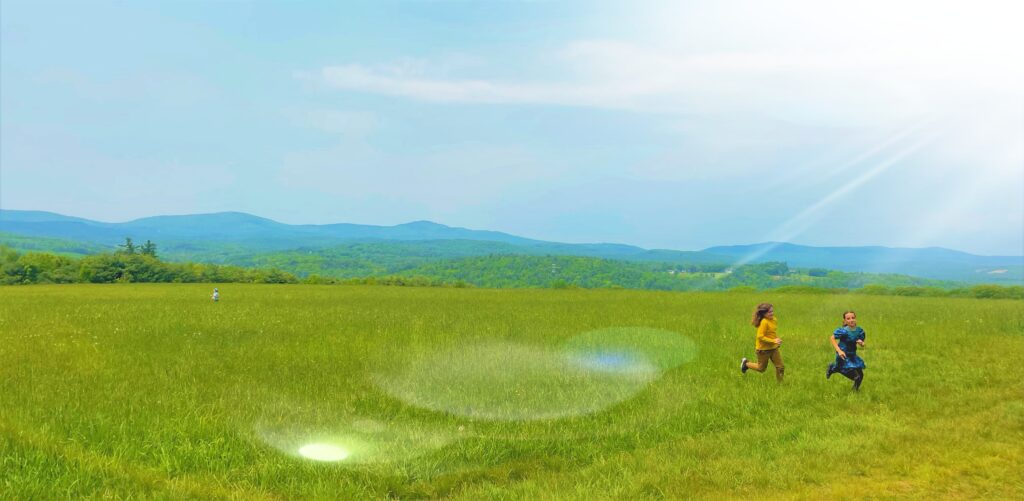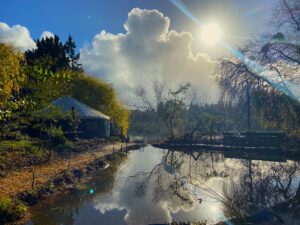Perspectives
Hundreds of Thousands of Footsteps

Revealing Impact Through Story
Those of us in nonprofit land conservation often wrestle with how best to capture and share the impact of our work. Numbers are interesting, yet they often seem to be little more than a pale symbol of the true meaning of land and place conservation. Recently, I received a short story associated with Living Lands’ collaborative conservation efforts in NH. These efforts arose as an extension of the amazing agrarian and conservation community that is Temple-Wilton Community Farm. It is a pleasure to share this small beautiful story from friend and collaborator, Ian McSweeney …
I am not sure how much of a land tour you all took on after we parted ways, but I share some photos and a brief story that highlights some of the other Living Lands farmland protection work on Abbot Hill. The photos are of my younger son and his 4th grade class on a recent and regular Wednesday afternoon hike. The locations are Frye Field and the Souhegan River, both areas are part of the conservation easement held by Living Lands.
Four generations of the Frye family farmed this land and did their best to keep the kids from High Mowing and Pine Hill off the land, as metal, glass, cigarettes and more could cause fire or damage to hay crops. This practice was believed to safeguard the hay crop, which perhaps if did, but it surely separated people from the land. The farmland really only ever felt the rubber and steel of the tractor and implements a few times a year, no real direct human contact. The kids only enjoyed the view, and as teenagers, occasionally snuck into the forest to avoid dorm parents’ eyes and rules. Most kids and adults at the schools did not even know the land connected to the river.
Years ago, in educating the community on the importance of this land in preparation for the fundraising campaign ahead, we made a video of a walk bushwhacking through the forest down to the river, then we hosted a series of walks to bring people along. Once the land had been acquired by High Mowing and the conservation easement was underway, we planned and created trails as part of forest management activities and work to become a certified tree farm. Over the years, these conservation efforts have nourished the land and the community in so many ways, particularly during the difficult pandemic years. The farmland now feels and supports hundreds of thousands of footsteps annually (and animals who have now been part of rotational grazing activities at times). The kids and the community now connect to the land and wade in the river as part of a normal school afternoon hike. Perhaps the next generation of land stewards?



